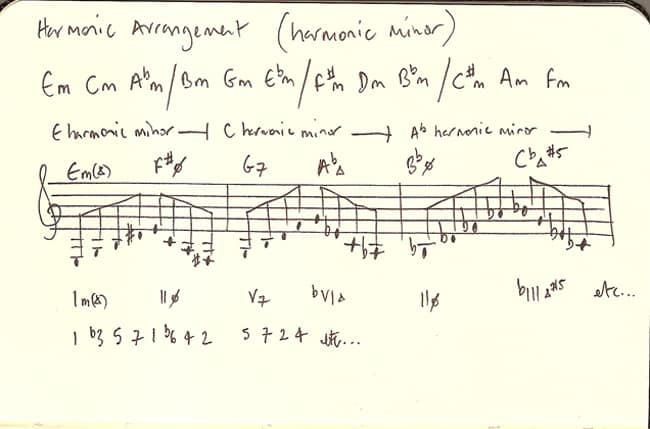In this lesson, I showed you a way to organise key centres for practising things in every key. Here’s another example of using a harmonic arrangement to practise in every key, but this time in Minor Keys.
In a couple of cases, I’ve chosen keys which avoided double sharps or flats, but there are always going to be a few places where the chord name is unusual – e.g., Cb∆#5 or E#º7. Anyhow – no pain; no gain :)
In this exercise, you play two consecutive seventh chord arpeggios as in the picture.
And then you change key, and move to the nearest arpeggio.
You might try limiting the scope of the exercise somehow. Try the first five frets. That’s something my guitar teacher Mike Walker used to make me do. (if you haven’t heard him, I’d suggest giving him a listen, as he’s the best guitarist in the world)
Try these things:
- Say the chords names as you go: E-∆, F#-7b5 etc.
- Say the function of the notes.
- Say the note name.
